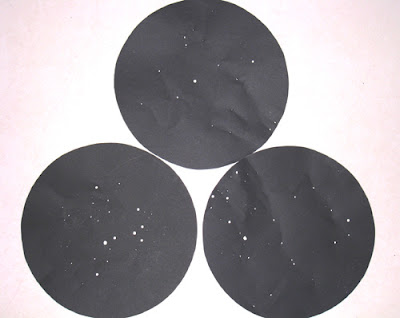Building Foundation of Scientific Understanding has lessons in four separate pathways; these will normally be put in different branches of Sciences. The lessons are roughly arranged into these threads -
A:Nature of Matter
B:Life Science
C:Physical
D:Earth and Space Science.
But because these different branches are in fact very much interrelated, Dr Nebel, the author suggests covering across all branches instead of focusing on just one. Each lesson has its prerequisite lessons so that takes care of continuity and progression.
As such, you will notice that my BFSU posts may seem a little unrelated because of how I will be moving from one branch to another. The link is rather apparent when I read the content of each lesson. This approach appears to be the exact opposite of that taken by Jeanie Fulbright of Apologia. I see advantages in both these approaches. As it is now, I am enjoying the variety that these two curriculum is giving us!
We are now in the Earth Science branch (
D).
D1- Part 1 - GravityWe have previously read books on gravity so this is not a new topic for my boys. The additional information for them is how gravity acts on all matter and always acts downwards but yet when two objects put together, one has to consider
relative density. The example given is how helium floats up in air, or how oil floats on water. The children were also asked why birds or airplanes can fly up. They are made aware that a greater force in the upward direction must be generated to overcome the gravitational force that is downward. This will relate to the lessons on forces later.
This simple "talking-it-out" and demonstration (to see how a droplet of oil falls down in air but floats in water) lesson culminated with the making of a minibook of the concepts that were discussed.

I like minibooks as compared to a worksheet or a blank A4 size paper for
notebooking. A simple long-reach stapler and a few sheets of A5 size paper got the book ready to be filled in. The small size makes it less daunting for the children. Each page takes about 2 to 3 sentences or a small labeled diagram to fill. It gives my boys a tremendous sense of accomplishment and all with little effort. I get a record of what we do with little resistance as well. Retention of information is also high. A win-win situation.
Sometime ago we read a library book called
Forces Make Things Move by Kimberly Brubaker Bradley. This happen to be a correlated book listed in BSFU. We liked it so much that we made minibooks on the topics. These are our orphaned minibooks (doesn't quite belong in any of our current lapbooks). The concepts in these were relevant for this topic on gravity so we used our minibooks to do a review.

The top minibook says " What is Gravity?". It was written in pencil so it doesn't quite show up in the picture.
D1- Part 2 - Vertical and HorizontalThis section appeared rather trivial to me at first sight but when I started reading and conducting the lesson, I was rather surprised by how the children were made to see vertical as relating to gravitational pull. And how this fundamental concept is a building block in understanding forces acting on objects that are not vertical, leading on to the importance of ascertaining true vertical.
Horizontal was explained as being level. After a series of thinking questions, the children were led to the conclusion that still water is a measure of exact horizontal.
We built a crude version of a surveyors gadget and a plumb line. I got the idea from
300 Science and History Projects by Oxlade, Halstead and Reid.

We made another minibook.
The assigned reading after this lesson was
How to Build a House by Gail Gibbons. And just for fun, I also read 我来盖房子, a book in our
Chinese Science Picture Book Series that I've got.
D1 - Part 3 - Gravity and the Orbits of Heavenly Bodies and SatellitesWe talked about the forces that act on Earth that keeps it in orbit around the sun. There are two forces at play; namely gravitational pull of Earth on the sun (and vice versa) and the forward motion of Earth.
Visit
Rumphius Science Webpage to learn more about how we approach Science in our homeschool.





















